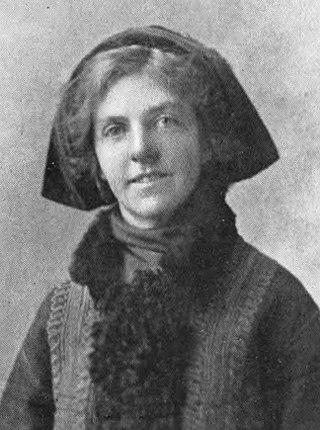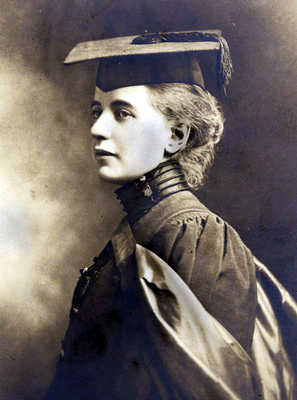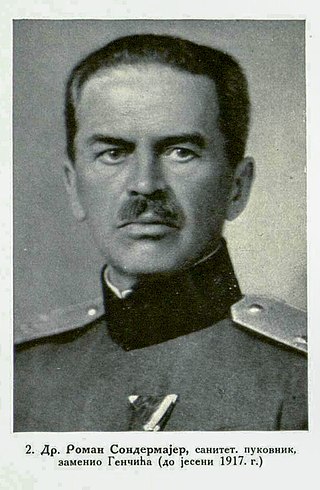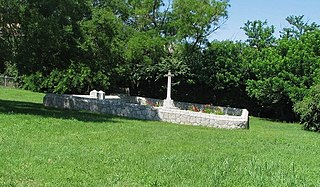
Brigadier General George Miller Sternberg was a U.S. Army physician who is considered the first American bacteriologist, having written Manual of Bacteriology (1892). After he survived typhoid and yellow fever, Sternberg documented the cause of malaria (1881), discovered the cause of lobar pneumonia (1881), and confirmed the roles of the bacilli of tuberculosis and typhoid fever (1886).

During the 1793 Yellow Fever epidemic in Philadelphia, 5,000 or more people were listed in the register of deaths between August 1 and November 9. The vast majority of them died of yellow fever, making the epidemic in the city of 50,000 people one of the most severe in United States history. By the end of September, 20,000 people had fled the city, including congressional and executive officials of the federal government. Most did not return until after the epidemic had abated in late November. The mortality rate peaked in October before frost finally killed the mosquitoes and brought an end to the outbreak. Doctors tried a variety of treatments but knew neither the origin of the fever nor that the disease was transmitted by mosquitoes.

Flora Sandes was a British woman who served as a member of the Royal Serbian Army in World War I. She was the only British woman officially to serve as a soldier in that war. Initially a St John Ambulance volunteer, she travelled to the Kingdom of Serbia, where she was welcomed and formally enrolled in the Serbian army. She was subsequently promoted to the rank of sergeant major, and, after the war, to senior captain. She was decorated with seven medals.

Mabel Grouitch was an American archeologist, philanthropist and voluntary nurse with the Red Cross in Serbia, during the two Balkan wars and World War I.

The Cork Street Fever Hospital, also known as the House of Recovery, was a hospital located in Cork Street in Dublin, Ireland.
The typhus epidemic of 1847 was an outbreak of epidemic typhus caused by a massive Irish emigration in 1847, during the Great Famine, aboard crowded and disease-ridden "coffin ships".

Louisa Jordan was a Scottish nurse who died in service during the First World War.

The Scottish Women's Hospitals for Foreign Services (SWH) was founded in 1914. It was led by Dr Elsie Inglis and provided nurses, doctors, ambulance drivers, cooks and orderlies. By the end of World War I, 14 medical units had been outfitted and sent to serve in Corsica, France, Malta, Romania, Russia, Salonika and Serbia.

The Scottish Women's Hospital at Royaumont was a medical hospital during World War I active from January 1915 to March 1919 operated by Scottish Women's Hospitals (SWH), under the direction of the French Red Cross and located at Royaumont Abbey. The Abbey is a former Cistercian abbey, located near Asnières-sur-Oise in Val-d'Oise, approximately 30 km north of Paris, France. The hospital was started by Dr Frances Ivens and founder of SWH, Dr Elsie Maud Inglis. It was especially noted for its performance treating soldiers involved in the Battle of the Somme.

Margaret (Madge) Neill Fraser usually known as Madge, was a Scottish First World War nurse and notable amateur golfer. She represented Scotland at international level every year from 1905 to 1914.

William Hunter CB FRSE was a British surgeon known primarily for his theories on oral sepsis, one of the inspirations for the Henry Cotton theory of focal sepsis which led to the increased number of tooth extractions and tonsillectomies in the 1910s and 20s. By the 1930s, this view had fallen out of favor, but not until after thousands of surgeries had been performed.

Alice Hutchison was a British medical doctor who served in the Balkan and First World Wars. She was one of the first women to lead a war-time hospital unit and was awarded the Serbian Order of Saint Sava.

Elizabeth Ness MacBean Ross was a Scottish physician who worked in Persia among the Bakhtiari people. With training and a post-graduate qualification in tropical medicine, she responded to an appeal for doctors by the Serbian government in 1915 and treated Serbian casualties, most of whom were victims of typhus. Ross's life and work is commemorated by a plaque in her home town of Tain and her death anniversary is commemorated by ceremonies in Serbia, on 14 February.

Katherine Stewart MacPhail OBE was a Scottish surgeon. During World War I, she served as Chief Medical Officer of two units of the Scottish Women's Hospitals for Foreign Service. She cared for the wounded in Serbia, France, and the Thessaloniki Front. In 1921, during her stay in Serbia, she founded the country's first children's hospital. While she is remembered as a national hero in Serbia, she was criticised by some for providing her expertise in Serbia rather than in her own country. Her honours include several medals, plaques, and a postage stamp.

Colonel Dr. Roman Sondermajer CMG was a Royal Serbian Army physician who served as Chief Surgeon of the Royal Serbian Army, Chief Surgeon and Director of the Military Hospital and Chief of the Medical Staff of the Serbian Supreme Command during World War I.

Samuel Albert Cook was a medical doctor and member of the American Red Cross mission in Serbia during First World War.

A Serbian barrel is a sterilization device used for sterilizing clothes. It consists of a wooden or metal barrel or other container which is then heated to disinfect items hung inside it by moist heat sterilization.

Eleanor Soltau (1877–1962) was an English doctor who led the first unit of the Scottish Women's Hospitals for Foreign Service in Serbia.
Grasett Park is situated at the corner of Adelaide Street West and Widmer Street in downtown Toronto, Canada. It is a public space that commemorates Dr. George Robert Grasett who, in the summer of 1847, gave his life to care for Irish migrants fleeing the Great Famine, many of whom arrived in Toronto sickened or dying from typhus, then known as ship fever. At the time, Toronto had merely 20,000 residents, and thus struggled to accommodate the more than 38,000 migrants who arrived in 1847 alone.

The Commonwealth Military Cemetery is located in Niš, Serbia in the municipality of Palilula. It is listed as a Protected Cultural Monument of the Republic of Serbia. The cemetery's address is 1 Miladina Popovića Street, in the district of Delijski of Niš and approximately 500 metres from the Skull Tower. For that reason, it is also sometimes listed as Chele Kula Military Cemetery.

















